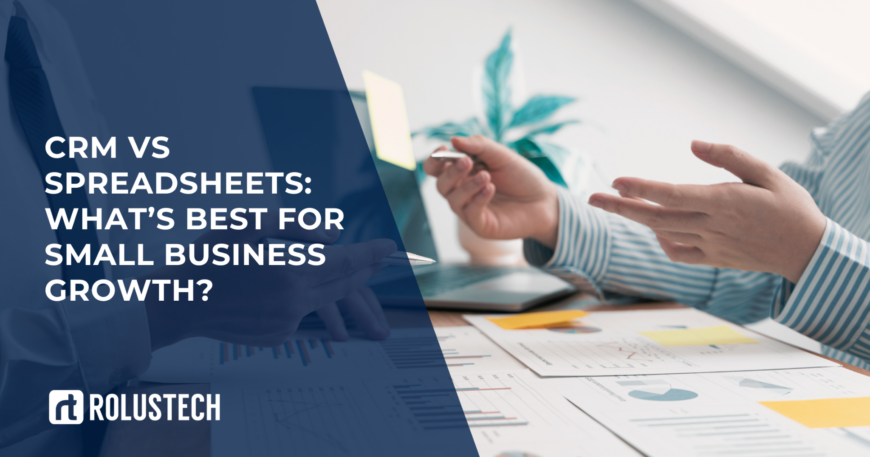If you’re a small business owner, choosing the right tool to manage customer data is crucial. Between a spreadsheet and a CRM, the decision can impact how fast your business grows.
Many startups still rely on Google Sheets or Microsoft Excel because they’re familiar, free, and good for data management. But as your business grows, the limitations of an Excel sheet start to show.
That’s where CRM software comes in. Short for customer relationship management, it’s more than just a tool, it’s an ever-evolving system to nurture new users, manage the funnel, and look after long-term customers.
A good business management strategy means using the right tool at the right time. With the boundaries of CRM features constantly expanding, it’s harder to attach one fixed definition to it.
Spreadsheets: A Simple Start, But Is It Enough?
A spreadsheet simply means using tools like Excel or Google Sheets to track client details. It’s an affordable, easy-to-use solution, especially if you’re a small business or even a one-person business.
You can use filters to sort spreadsheet data by gender, location, or acquisition channels. This helps you quickly assess marketing performance and keep things somewhat organised.
Spreadsheets are also helpful for storing customer information and performing basic analytics using formulas, pie charts, and graphs. You can start here and later import your data into a ready-made CRM when you’re ready to scale.
But while you climb the business mountain, ask yourself how long you can commit to manual updates.
Benefits of Using a CRM in Excel
Using a CRM in Excel feels easy because the interface is already familiar. Most people know how to enter client details, apply formulas, and filter data.
It’s also low-cost or completely free, which helps small businesses and startups just starting out. You don’t need to pay a subscription fee or learn a new system.
Also, you can make it your own. With some basic skills, you can set up simple systems, add shortcuts, and automate tasks.
Limitations of Spreadsheet
Spreadsheets rely on manual data entry, which is often error-prone and very time-consuming. When sales reps or customer support teams are updating customer data, they lose focus on building real client relationships.
You can’t easily track service history, past emails, or call recordings across multiple files. There are no automated reminders, so you manually check if tasks are completed or leads followed up.
Spreadsheets also lack real-time collaboration, can’t score leads, and have weak data security. Over time, you risk losing valuable information and even missing opportunities.
CRM Software: A Smarter Way to Manage Relationships
A CRM system goes beyond what a spreadsheet can offer. It stores more than just names, phone numbers, or addresses, it becomes a single source of truth.
With a proper CRM platform, your team sees every customer interaction, from emails to chatbots. Whether it’s sales reps or support agents, anyone can access previous purchases and service history in seconds.
This level of organisation and automation boosts employee productivity and creates a better customer experience. Most importantly, a CRM is built to grow with your business.
Centralized and In-depth Customer Information
A CRM gives you unified profiles where all client details live in one place. You can view their communication history, past interactions, and even recent purchases instantly.
It also stores notes, files, and every stage of the contact lifecycle, so nothing gets lost. Everyone on your team stays informed, which keeps conversations smooth and consistent.
Automation for Efficiency
With an effective CRM, you can run email campaigns that trigger automatically based on customer actions. No more sending one email at a time.
Set up follow-up reminders or use workflow triggers to keep your sales pipeline moving. It saves time, reduces human error, and ensures no lead gets forgotten.
Real-Time Reporting and Analytics
CRMs let you track your sales funnel live that means no waiting, no refreshing. You’ll see which lead sources perform best and where drop-offs happen.
With real-time analytics, you can measure activity-based performance and adjust your strategy quickly. Unlike spreadsheets, no complex formulas or manual sorting needed.
Scalability and Team Collaboration
As your business grows, a CRM grows with you. It supports multi-user access without breaking the system.
You can set role-based access so the right people see the right information. Plus, most CRMs come with mobile apps and integrations to keep everyone connected.
CRM vs Spreadsheets: Which Is Better for Small Business Growth?
Spreadsheets are great for early-stage businesses with a small team and fewer customers. They’re cost-effective and easy to set up.
But as your needs grow, CRM platforms offer better customer data management, automation, and team collaboration. They unlock insights and scale with your business, spreadsheets just can’t keep up.
| Feature | Spreadsheet | CRM |
| Ease of Use | Familiar, simple | Slight learning curve |
| Cost | Free or very low | Often subscription-based |
| Data Entry | Manual | Automated with forms, integrations |
| Collaboration | Limited, version issues | Real-time, multi-user access |
| Automation | Basic formulas | Full automation (emails, workflows, follow-ups) |
| Security | Low, easy to leak/share | High (encryption, access control) |
| Scalability | Limited | Designed to grow with business |
When Does It Make Sense to Use a Spreadsheet CRM?
If you’re a solo entrepreneur or working on a short-term project, spreadsheets work just fine. They’re perfect for basic lead tracking and light data management.
You can build a simple spreadsheet pipeline, update it in real time, and stay organized. For a small business with limited needs, it’s a flexible and collaborative tool.
When to Upgrade to a CRM?
Once your contact list grows or your team expands, it’s time to upgrade. You’ll need automation, not just manual updates.
CRM systems help you track sales data, spot buying patterns, and reduce churn with smart follow-ups. They support complex pipelines, real-time analytics, and keep everyone aligned.
Choosing the Right CRM for Your Business
Look for a CRM platform that’s easy to use, fits your budget, and offers smooth integrations. The goal is to simplify and not complicate your workflow.
Make sure it works well with your marketing tools and provides actionable insights from your customer data. Talk to your stakeholders and choose a CRM that supports your future growth with expert implementation support to make the transition smooth.
Final Verdict: CRM or Spreadsheet: What’s Best for You?
If you’re just starting out, a spreadsheet might be enough for basic customer data management. But as your business and team grow, a CRM becomes essential.
With automated workflows, advanced analytics, and robust integrations, it delivers serious value. They boost collaboration, improve employee productivity, and scale with your growth.
FAQs
Q1: Can I use Excel as a CRM?
Yes, you can use Excel as a basic CRM. But it lacks features like automation and real-time collaboration.
Q2: What are the limitations of a spreadsheet?
Spreadsheets are manual, prone to errors, hard to scale, and not built for teamwork or security.
Q3: Is a CRM better than Excel for sales tracking?
Absolutely. A CRM tracks the sales funnel, sets reminders, and shows performance insights automatically.
Q4: What’s the best CRM for small businesses?
It depends on your needs, but tools like HubSpot are great places to start.
Q5: How do I know it’s time to switch from a Spreadsheet to a CRM?
If your leads are slipping through the cracks or your team is growing, it’s time to upgrade.
Q6: Are there free CRM tools better than spreadsheets?
Yes! Platforms like HubSpot CRM offer free plans with better features than basic spreadsheets.







